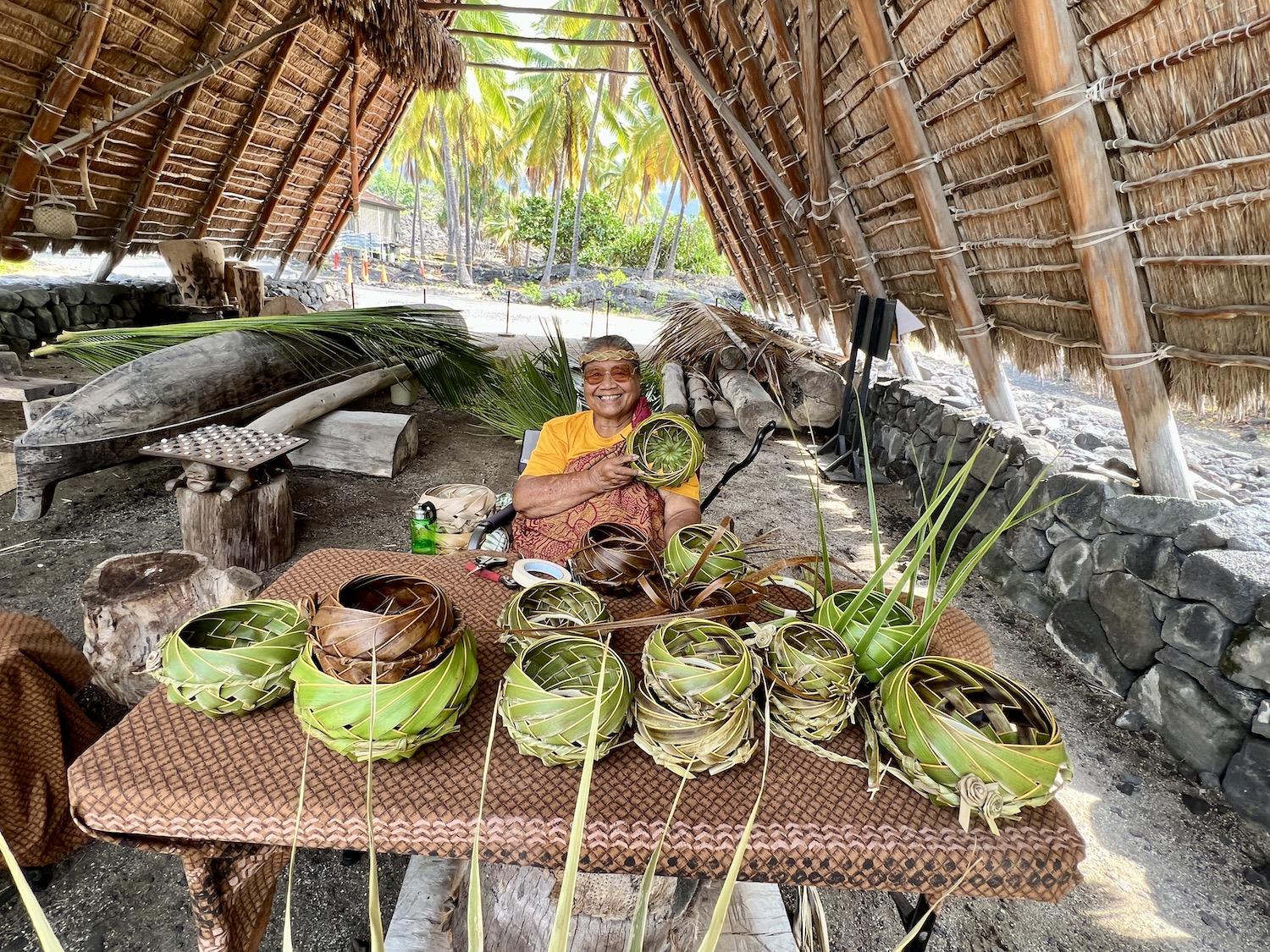
In the hale wa'a (Canoe House) at Pu'uhonua o Hōnaunau National Historical Park, Aunty Keikaili'i San Filippo does a cultural demonstration of coconut frond weaving/Jennifer Bain
In the shade of the Royal Ground’s open-air Canoe House, with only the chatter of the Common Myna disturbing the peace, Aunty Keikialiʻi San Filippo sits weaving coconut fronds into baskets and fielding compliments and questions from people from around the world. It's a skill that “Aunty Keiki” developed more than 40 years ago and she has been weaving for Puʻuhonua o Hōnaunau National Historical Park since the late 1970s.
“It energizes me,” she says simply of the craft. “It’s like a spiritual uplift because of my setting — the ocean, the sea, the rocks and trees.”
Aunty Keiki volunteers here on Friday mornings, effortlessly creating upwards of 40 baskets a day, though she figures she could make 50 if she wasn’t distracted. People are welcome to take home one of her freshly woven baskets or hats, but since no money can change hands, they’re encouraged to put something in the donation box by the visitor center on the way out. The money goes to various things that the park needs.
“She’s a treasure to our community,” says Kalā Holiday, who is an interpretive ranger and one of Aunty Keiki’s haumana (students).
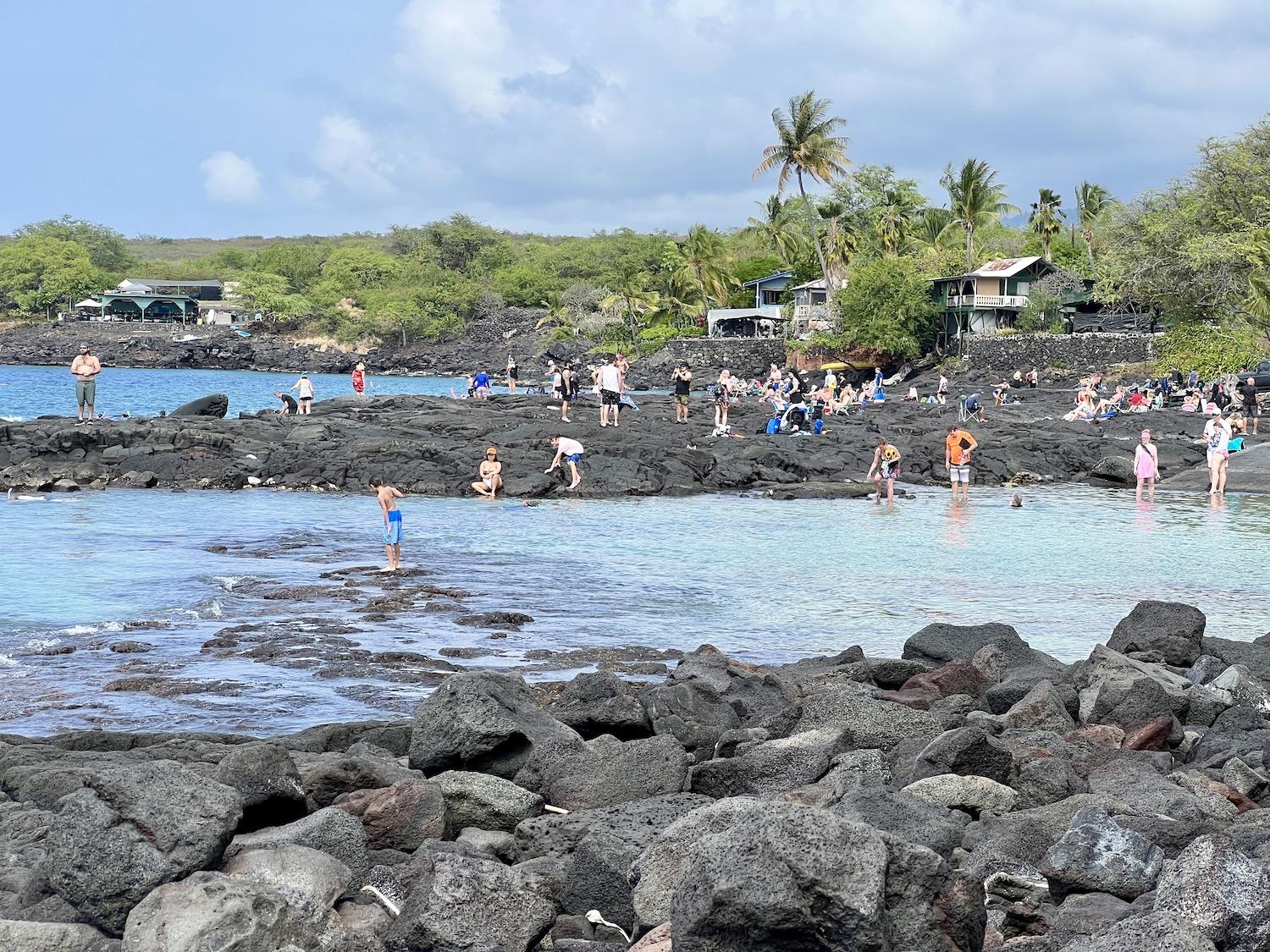
Standing in the national historical park, this is the view of the busy snorkel spot next door known as 2-Step (sometimes called Two Step Beach)/Jennifer Bain
The peaceful moments that I share with Aunty Keiki are in sharp contrast with an unusual problem facing this 420-acre park on the west coast of Hawaiʻi Island. Pu’uhonua is considered a wahi pana (legendary place) with extraordinary mana (spiritual power), coming in part from 23 ali’i (chiefs) whose bones were once protected in a heiau (temple) here called Hale o Keawe. This land once served as a place of refuge for those who broke kapu, the sacred laws and beliefs.
It remains a sacred place and yet, is uncomfortably close to private land and a snorkeling hotspot called 2-Step. Ever since the coastal lava rocks formerly used only by villagers and fishermen as a boat ramp wound up in a guidebook as an easy place to access top-notch snorkeling, hordes have descended to access Hōnaunau Bay from two natural rock steps. The rocks, tiny sand beach and clear waters are constantly jammed with people. However, there’s virtually no infrastructure, just a few portable toilets and a small paid parking area when I visit.
On a white board at Pu’uhonua's visitor center, I read this message: “Aloha. No snorkeling or swimming allowed in the historical park. 2-Step” (or Lae Kole) is located outside of the park. Parking is for national park visitors.”
At the park’s main washroom, I read this warning: “Swimmers, snorkelers and sunbathers: This facility is not a changing room. Sinks are for washing hands ONLY. Please do not use them to rinse off. Water on the floor is a safety hazard and sand is clogging the drains.”
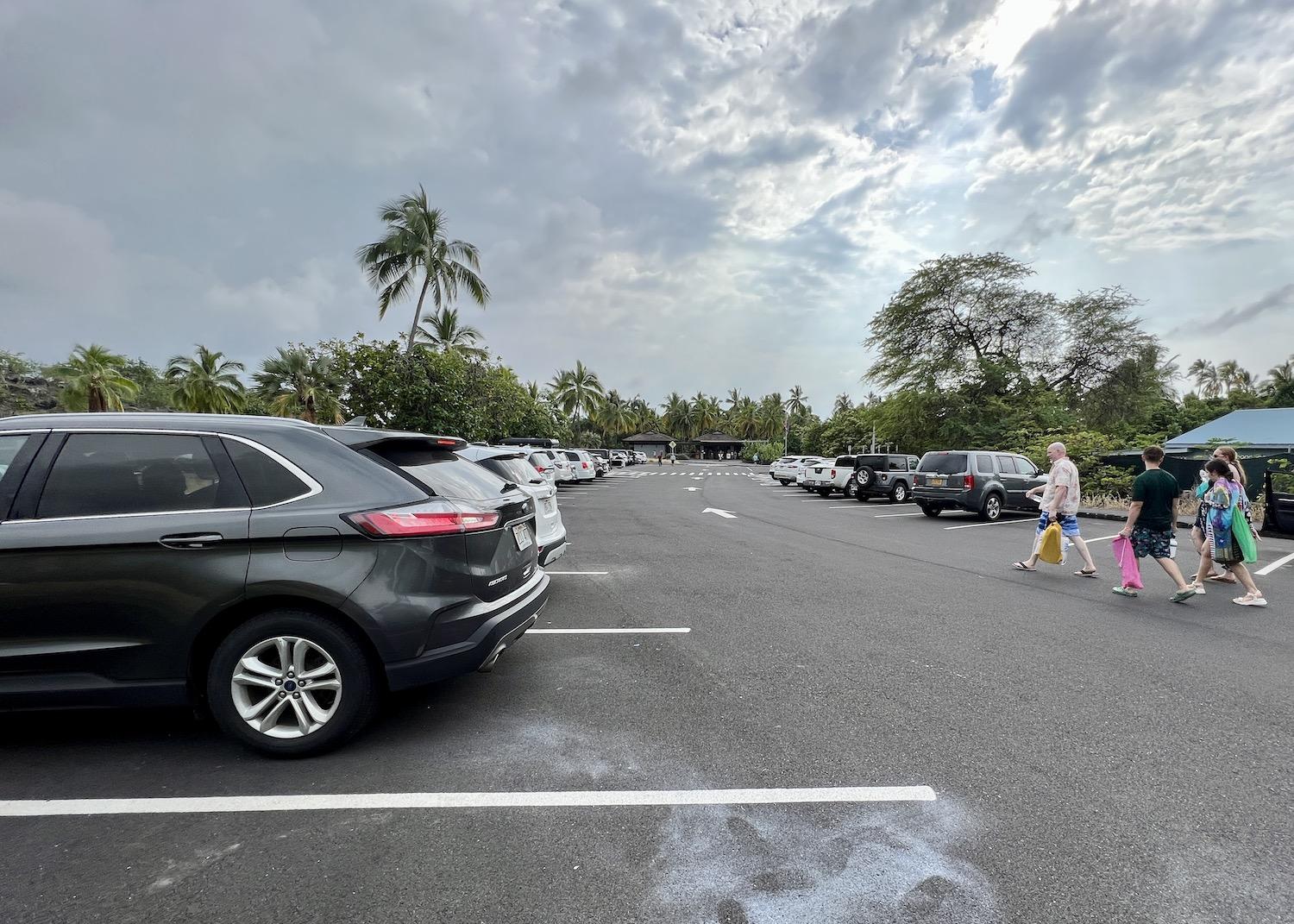
People use the national historical park's lot to snorkel next door despite signs saying parking is only for park guests/Jennifer Bain
From park staff, I learn that nobody formally oversees 2-Step and so when people are injured, they come running to Pu’uhonua o Hōnaunau for help. That means using limited park resources to treat cuts, scrapes and bruises, launch water rescues, and sometimes even call 911. The park is meeting with the county and the state to see what can be done.
Even more challenging is people’s flagrant disregard for parking lot rules. Sometimes the lot is full but the park is empty because snorkelers have taken all the spaces. There is staff at the gate and a $20 charge for private, non-commercial vehicles, but that does little keep the numbers down. During my February visit (winter in this state), I see countless people clad in bathing suits, carrying snorkeling gear and blatantly walking to and from 2-Step.
Standing with Holiday at the lava rock wall that separates the park from 2-Step (there are two small buildings in between), the din from the crowds next door detract from the sanctity of the national historial park. Most swim right by 2-Step, but some stray down in front of the park, which is technically legal as long until they try to climb out on these protected shores. There are, naturally, fears for the health of the coral.
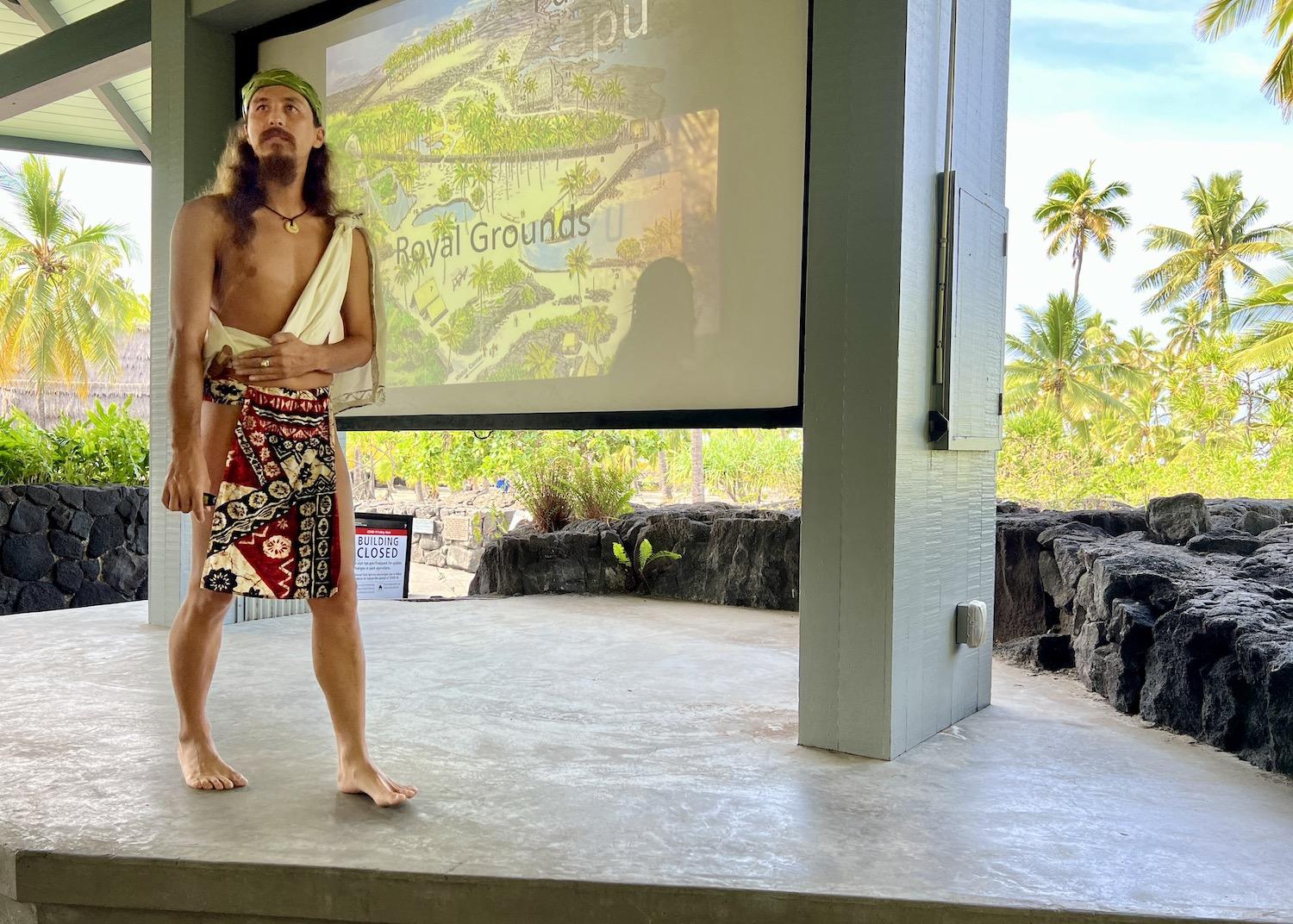
For a talk to students, interpretive ranger Kalā Holiday wears a traditional loincloth/Jennifer Bain
I listen in on a talk that Holiday gives in the amphitheater to a high school group. Established in 1961 on the prehistoric lava flows of Maunaloa volcano, the park saw some 250,000 visitors in 2021 (the pre-COVID record was 505,735 in 2017). Becoming part of the National Park Service, Holiday allows, can be considered both a blessing and a curse.
The federal status has kept crucial, pre-contact archaeological sites intact. “But becoming a national park has also opened the doors of one of our most revered churches to hundreds of thousands of visitors every single year. Many of which do not even know where they are by the time they arrive and, even less, an understanding of how to behave appropriately in a site revered as sacred.”
Holiday tells the teens that it’s “not a far-fetched comparison to say this is our people’s equivalent of the Vatican.” He asks how they intend to behave inside a Hawaiian church, while allowing that the word “park” is misleading to many. “Some come here thinking this is a playground and they are completely unaware of what lies in the sand. Others are under the impression that they’ve walked into a museum, unaware that everything in these grounds was made by members of our community and is still being maintained by them today.”
If visitors come across Hawaiians engaged in a religious ceremony, he advises, they should not interrupt or ask to take photos. But if they see cultural demonstrators, they are welcome to engage as elders like Aunty Keiki — proudly dressed in traditional attire — demonstrate ancient skills as a platform to teach younger generations.
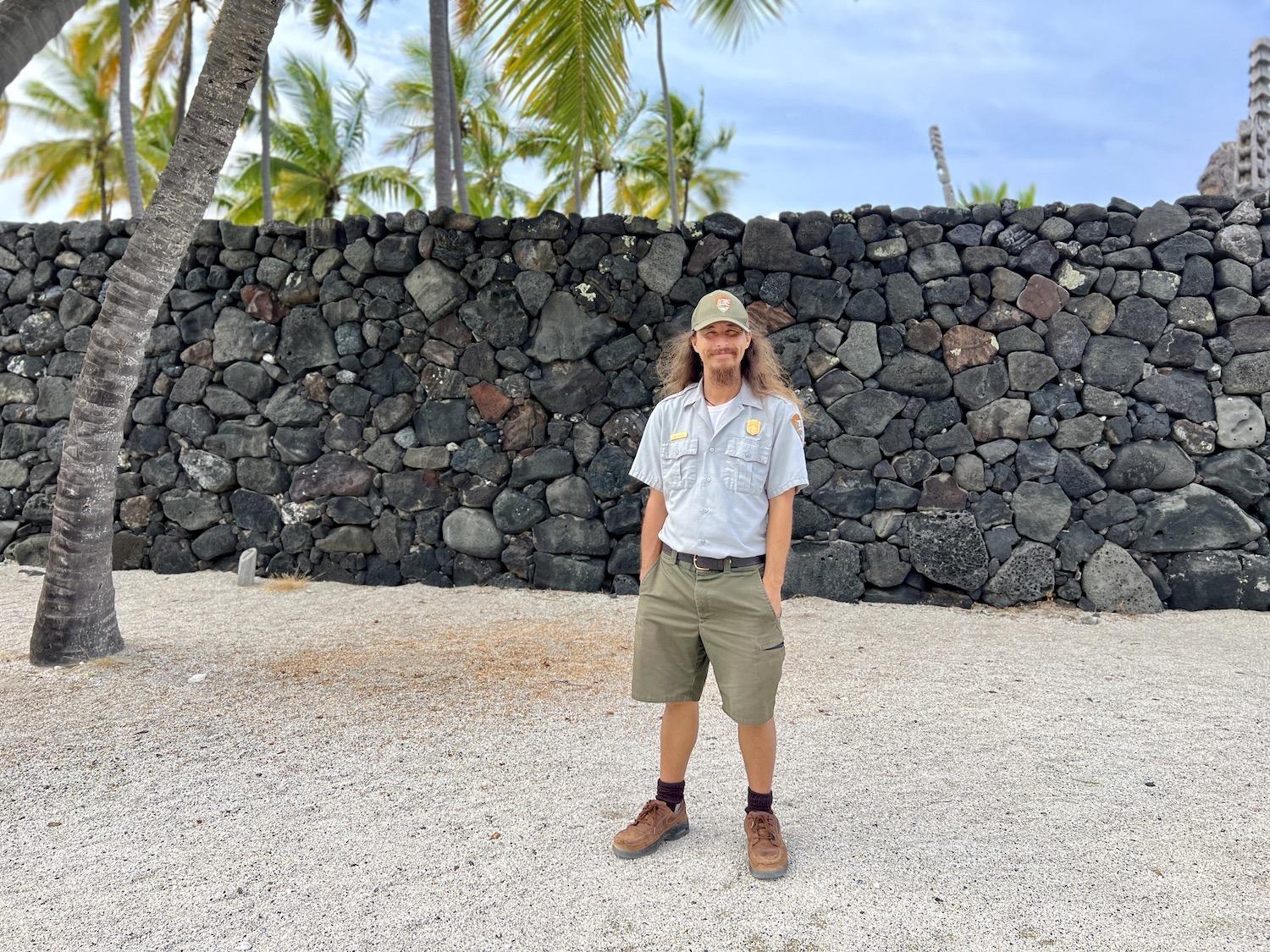
Now in uniform, interpretive ranger Kalā Holiday stands in the Royal Grounds by the Great Wall/Jennifer Bain
As he speaks, Holiday wears a traditional loincloth (malo) and wraps up by asking the students to fill out suggestion box forms so they can get more strong Native Hawaiian voices on staff. When it’s time to walk me around the Royal Grounds, the ranger has quickly changed back into his NPS uniform.
The park tries to minimize signs in this sacred space. We pass one fading sign etched into wood and attached to a rock wall that says “because this area is considered sacred, no picnicking, smoking or sunbathing please.” Outside of the Royal Grounds, there is a designated picnic area by the ocean.
“For more than 300 years, the Royal Grounds functioned as our island’s Buckingham Palace,” explains Holiday, who comes from a local fishing family and finally qualified for a temporary contract here in 2022 under pandemic hiring rules that gave locals a chance.
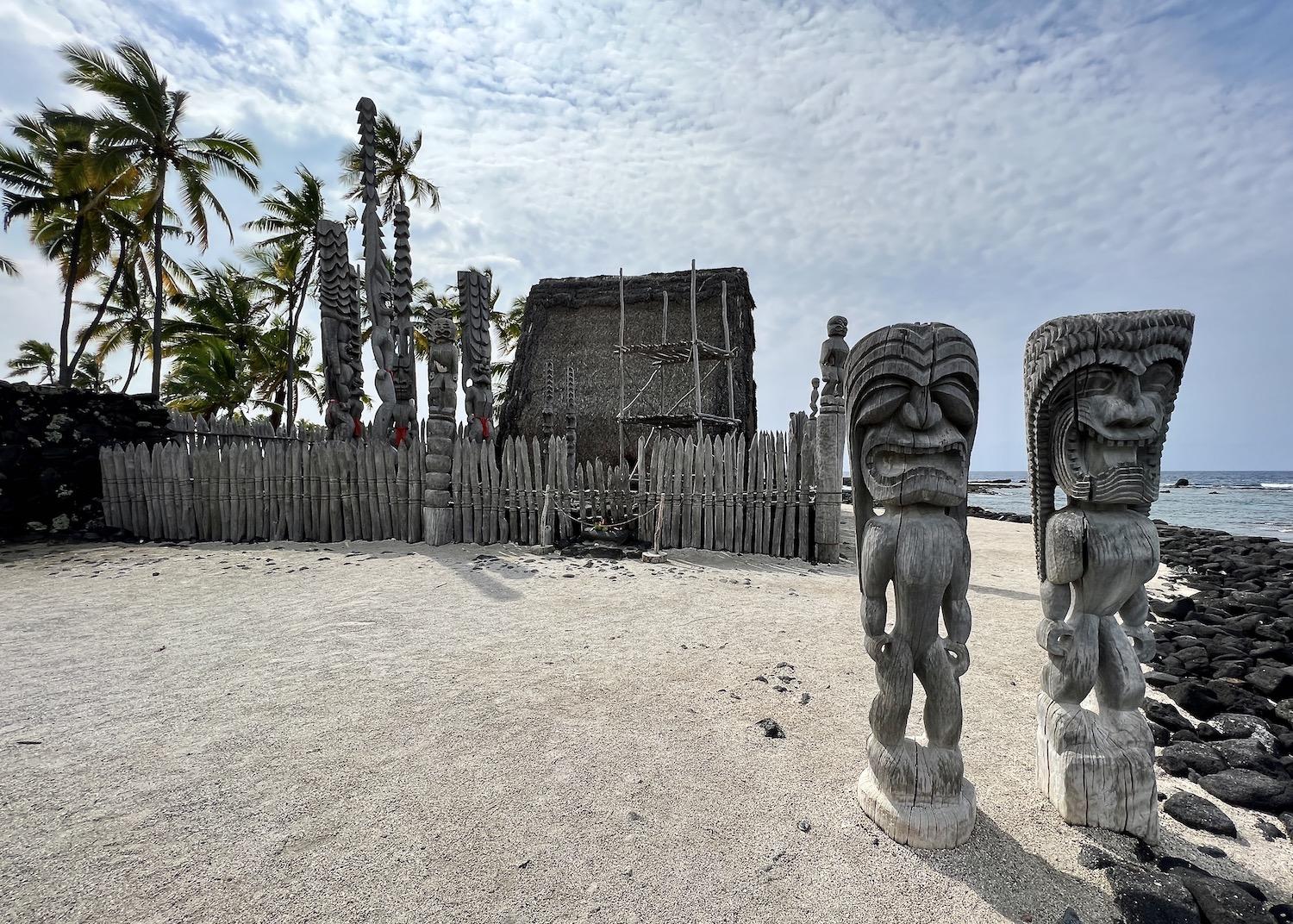
In the Royal Grounds, these two ki'i (wooden images of Hawaiian gods) are considered guardians that stand on shore to alert everyone to the great mana (spiritual power) here/Jennifer Bain
We stop by Hale o Keawe, a royal mausoleum that once housed the bones of 23 high-ranking chiefs and then raised carvings in their honor. It’s surrounded by wooden images called kiʻi that represent Hawaiian gods, steps from an area where people can explore tide pools in the lava rock shoreline. The Great Wall that surrounds the Royal Grounds is 400 years old and was constructed using dry-set masonry with no mortar between rocks. At the Royal Fish Ponds, invasive tilapia dominate in the brackish water and feral goats drop by to drink not far from where Aunty Keiki works in the large thatched Canoe House.
There is much to learn in the Royal Grounds, and a NPS audio tour, but this area takes up just a small portion of the park. Past the picnic area, there is a section of the Ala Kahakai National Historic Trail and a two-mile roundtrip loop called the 1871 Trail that goes past ancient and historic sites to the remains of Kiʻilae Village.
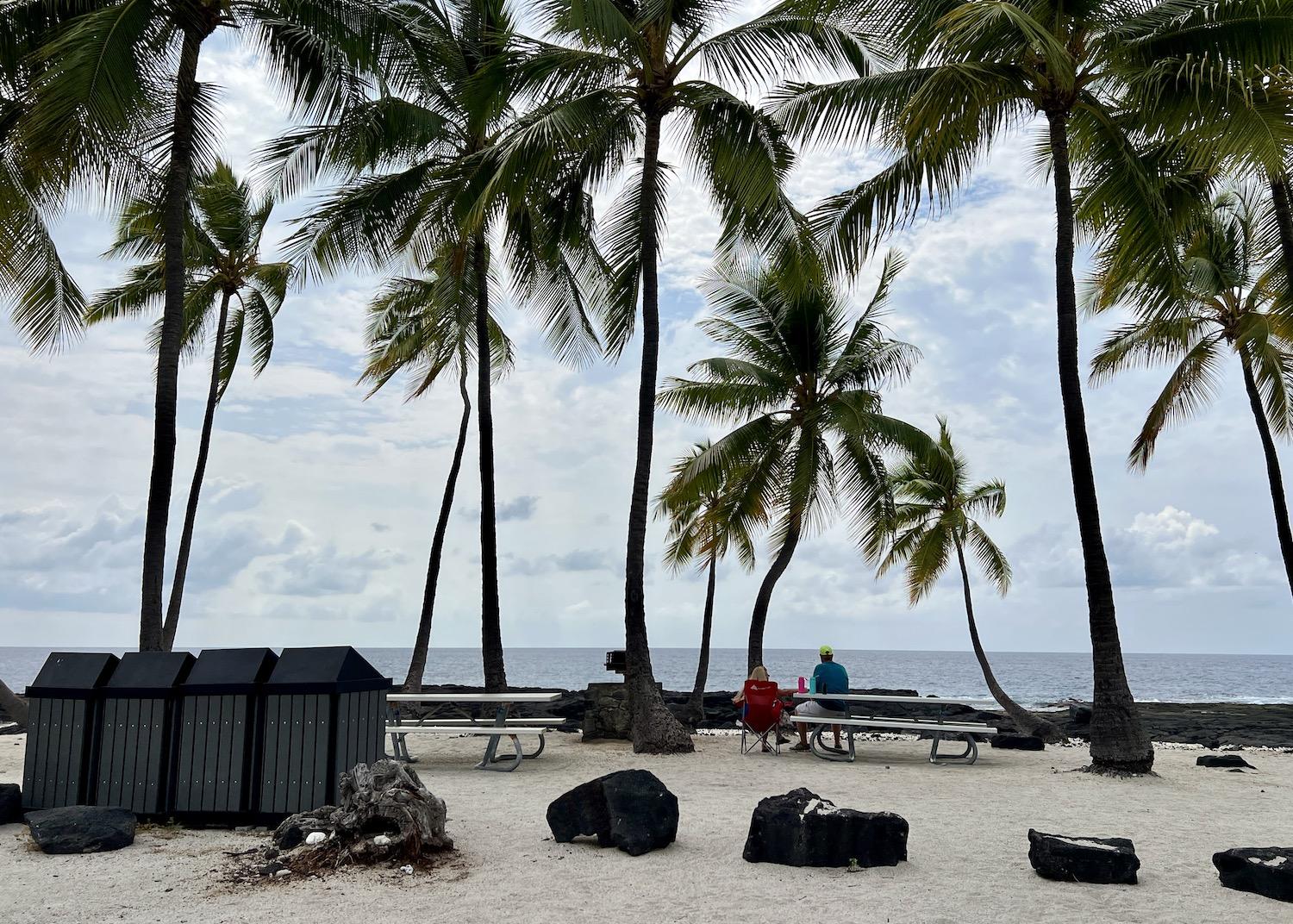
This quiet beachfront area of Pu'uhonua is outside of the Royal Grounds and an appropriate spot for picnics and bathing suits/Jennifer Bain
With a downpour looming, I skip the trails and drop into one more ranger talk in the amphitheater instead. This time, Holiday’s sister Kanani Enos shares meaningful and melodic chants, and tells a new group of visitors (this time mostly adults) how to be respectful. What is your sacred place, she asks? What boundaries and rules surround that place?
“It’s a good time in the world for compassion and respecting beliefs,” Enos concludes, after sharing that she was born and raised seven minutes up the road, that her father is native Hawaiian and that they are lineal descendants of priests and chiefs.
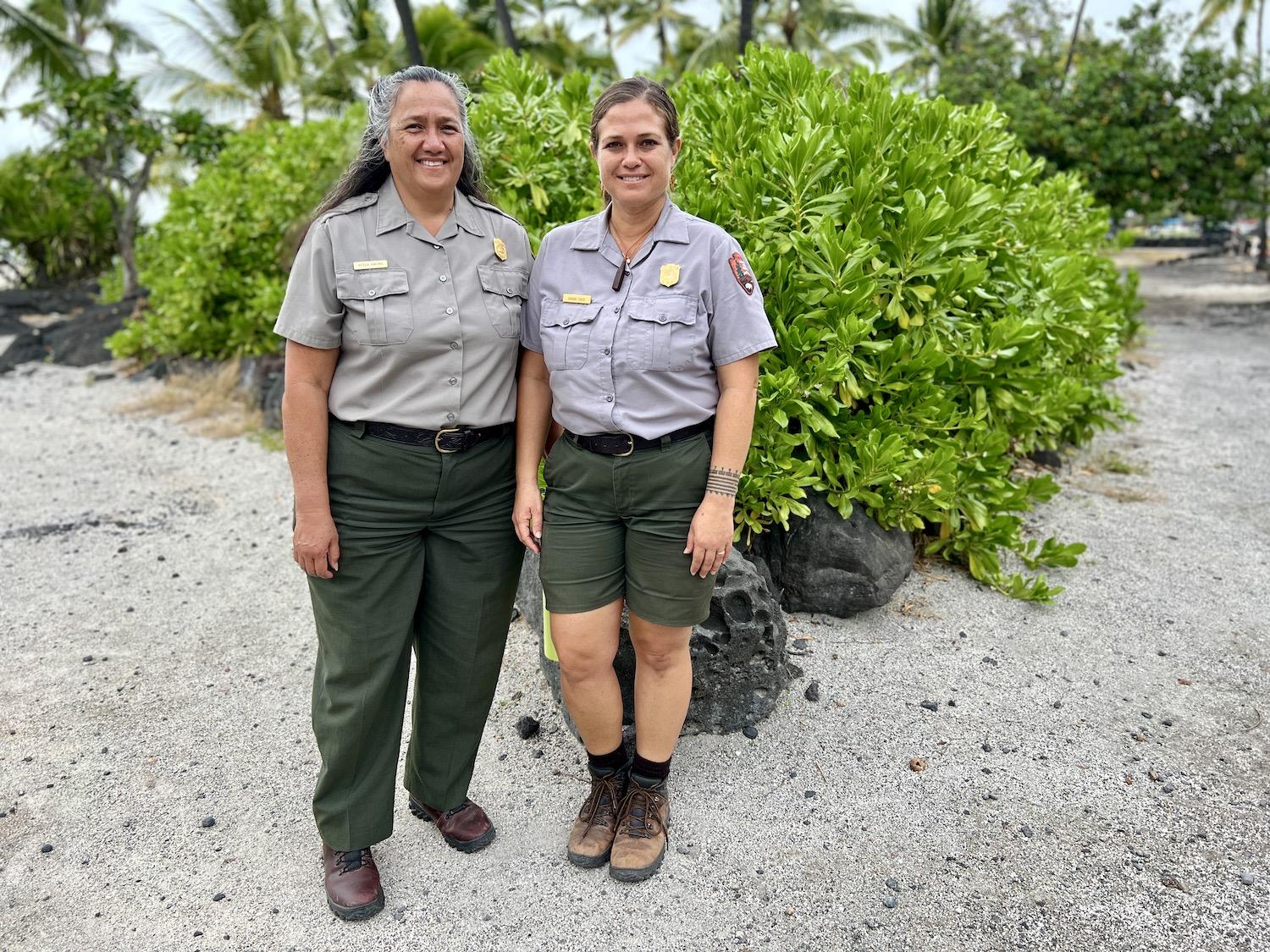
Supervisory park ranger Keola Awong and ranger Kanani Enos share tips on how to be a respectful visitor to Pu'uhonua and the challenges it faces from those who are not/Jennifer Bain
After the talk, I share a few final moments with supervisory park ranger Keola Awong, who has served as the park’s cultural anthropologist since 2005 and is a liaison to the native Hawaiian community. She hopes that both Hawaiians and visitors can come here and feel confident in this important space. People don’t know a lot of the history of Hawaiʻi, Awong laments, or about the ceremonies, protocols and practices that are still in place.
Before dodging carloads of wet snorkelers in the parking lot, I stop to read one final sign that suggests seven ways to be a respectful visitor. “Mahalo,” it says. “Give thanks for the privilege of visiting a site where only the highest priests and chiefs once set foot.”


